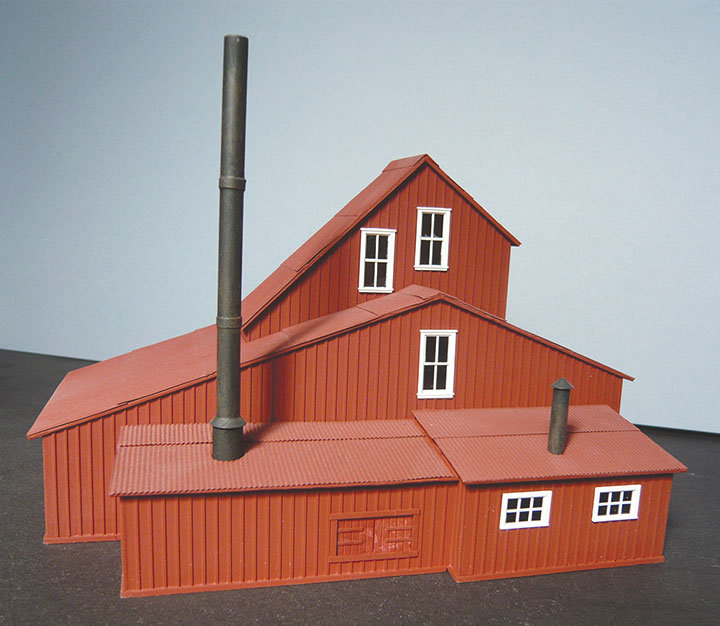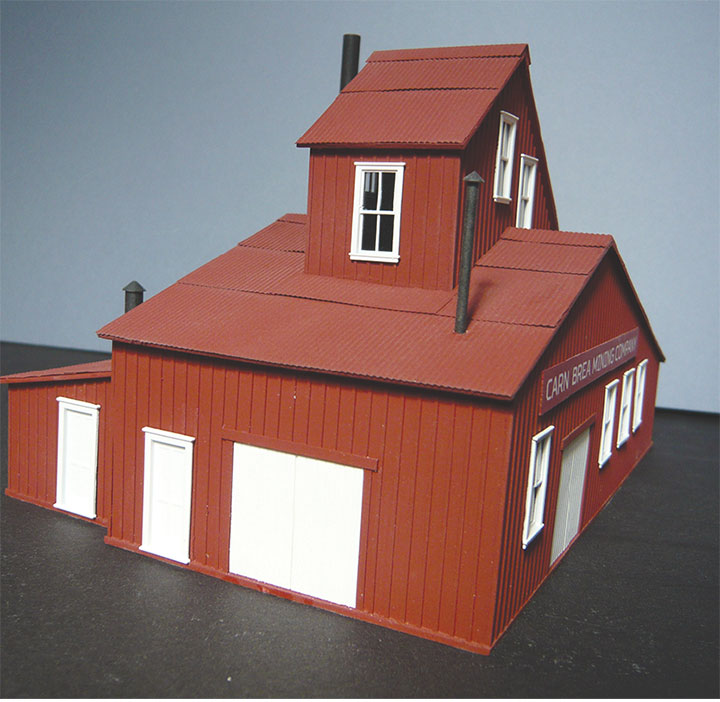I was pleased to read Bill Althoff’s letter in the May/June Pigeon Hole. I was aware of the fine HO scale Bodie Church kit by Historic Scale Miniatures and have assembled one into a very nice model. The windows in the bell tower are a bit too large and the choir room on the rear is missing. The photo Bill refers to was taken a year or two ago before the water mains were extended up Green Street.
Photos of the interior may be found in the following books:
Bodie, Boom Town — Gold Town!, by Douglas McDonald, on page 23.
This is with Christmas decorations.
Big Bad Bodie, by James Watson and Doug Brodie, on page 145.
This photo is a detail of the Ten Commandments Oil Cloth.
Bodie Good Times and Bad, by Nicholas Clapp, on pages 36 and 37.
This photo is probably the best, and taken before the Ten Commandments was stolen. It is in color.
Bodie, 1859–1962, by Terri Lynn Geissinger, on page 46.
This book is part of the Images of America Series, and the photo was taken before electricity was installed.
Sincerely,
Neil Pfafman, via email
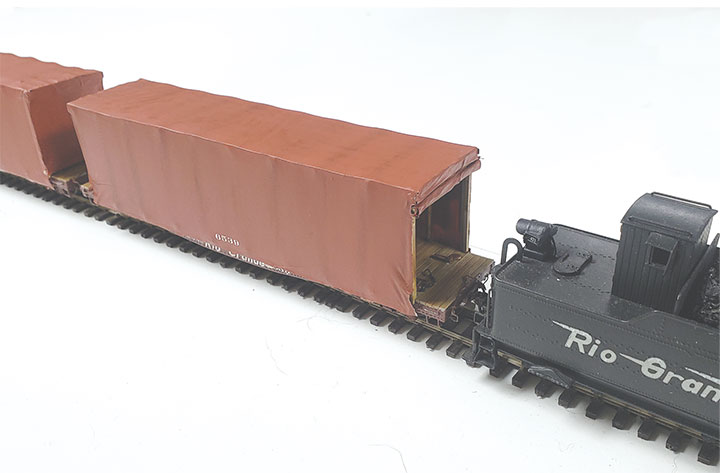
Dear Bob,
Thank you for many years of inspiration through the GAZETTE. After striving to match the craftsmanship of you, the columnists, and many contributors, I thought I would share a few photos of my work inspired by Craig Symington’s excellent modeling.
I followed Craig’s two part article on modeling the D&RGW’s 6500 flatcars modified for automobile shipping. Here are my HOn3 versions starting with PSC flatcar kits. I chose to deviate from Craig’s building process in that the superstructure was built with styrene, and I used a different media for the custom tarps. Craig had used the time tested tissue paper with diluted white glue for his tarps, but I feel the texture of the tissue is out of scale for HO models.
I used the heat shrink window sealing plastic film found in hardware stores and big box home improvement stores in the weather stripping section. Glued to the superstructure with CA and carefully shrunk with a hair dryer. After painting and weathering, I think it does a nice job of replicating the taught look of the custom tarps these cars had.
Sincerely,
Arthur Dutra, via email
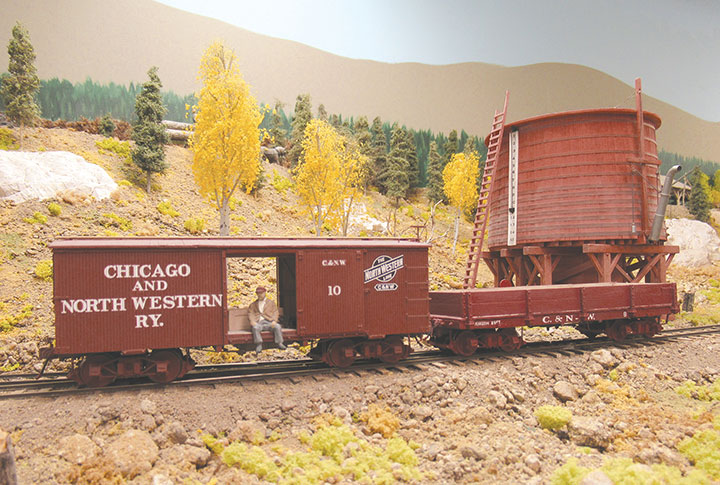
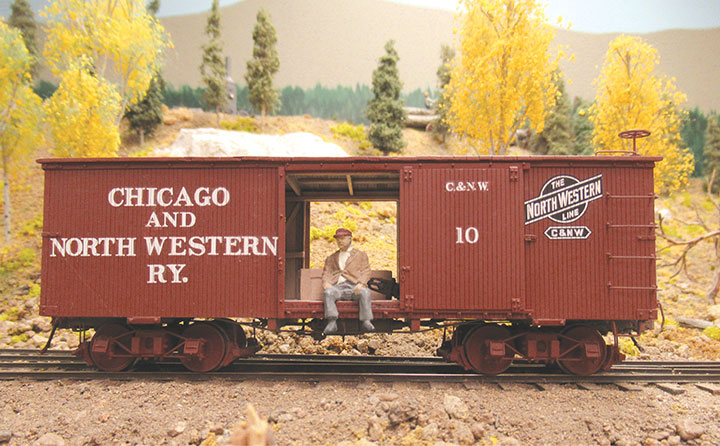
Dear Bob,
After seeing the Darr plan for the narrow gauge boxcar on page 60 in the March/April 2021 GAZETTE, I thought readers might be interested in the On3 models I built some 15 years ago. I was prompted to build these models because my grandfather and uncle once worked for the Chicago & Northwestern. I based my model on photos.
Sincerely,
Randy Rieck, via email
Dear Bob,
Each issue of the GAZETTE always amazes me. The really well done model of Chuck Lind’s (MMR) Tuolumne engine house in the May/June 2021 issue brought back memories of standing inside the engine house on the West Side Lumber Company, and marveling what was done there.
Nathan Burner (the late Bill Burner’s son) took me on a tour of it and the surrounding car shop and speeder repair shop. It must have been something to see all the daily work supervised by Ed Sullivan. His son Jack lives in Castro Valley, California, and has been a wealth of knowledge for me.
He is one of the handful of surviving employees left.
Sincerely,
Ed Sieckert, via email
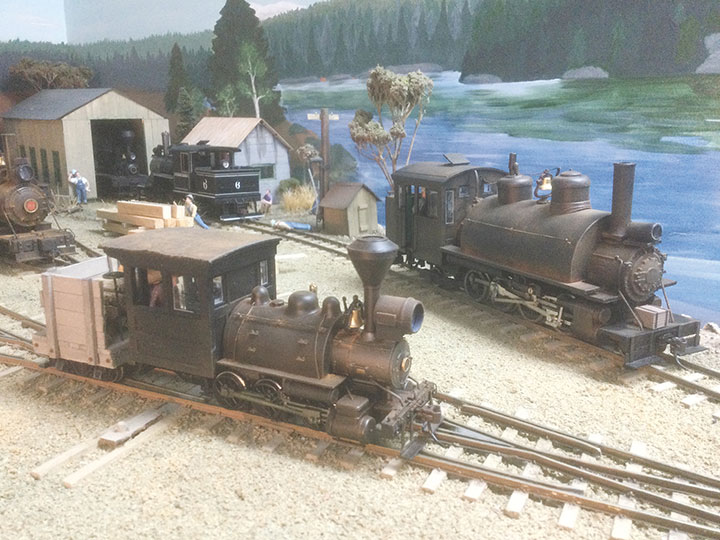
Dear Bob,
Thank you for publishing the photo in the May/June issue, of my conversion of an On30 Bachmann 2-6-0 into a 2-6-2 saddle tank loco.
Here’s a shot of two other conversions. The smaller loco started as an HO 0-6-0. I added an On30 cab, a taller stack and a new headlight. I created the small tender from a Kadee HO logging disconnect. The larger loco is an IHC 2-8-2. I added a saddle tank made from some ABS piping, a Bachmann Forney cab along with a fuel bunker and a new stack. I reused the domes from an old On30 shell but reduced the height of them to fit. Both locos have been weathered with powders to make them looked used.
I hope readers will enjoy these, and perhaps be inspired to do more conversions.
Sincerely,
M. Terry Ashcroft, via email
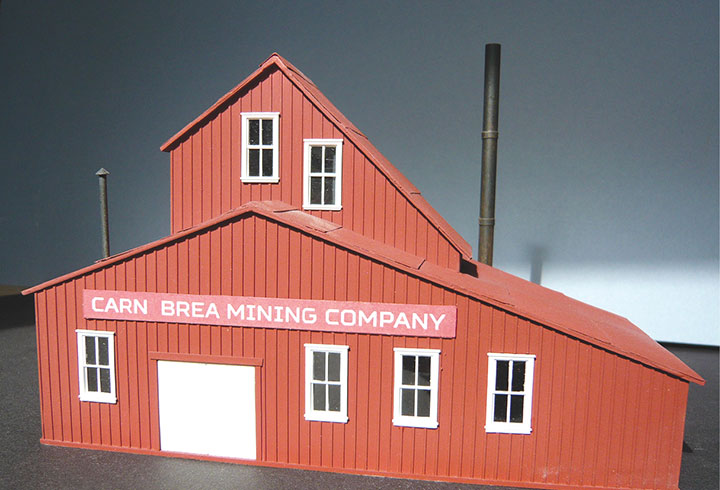
Dear Bob,
The article in the May/June edition of the Gazette — “The Crea Mine” — prompted me to send you this email (and attachments). I, too, was intrigued by that article in the March/April 2007 Gazette and subsequently built a model (HO) using Evergreen board-and-batten styrene, Grandt Line doors and windows, some corrugated aluminum sheet that I had at hand, with smokestacks fabricated from various sizes of brass tubing. Of course it needed a name.... Now, there were expatriate Cornish miners in Colorado, as everywhere else (it was once said that anywhere on Earth, that if there was a hole in the ground, there would be a Cornishman at the bottom of it!), so my mine acquired a Cornish owner. (Carn Brea is an area in Cornwall long associated with mining).
Hope it amuses you!
Sincerely,
Ian Kennedy, via email
